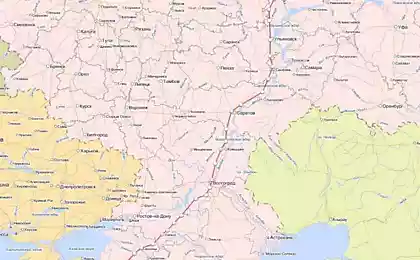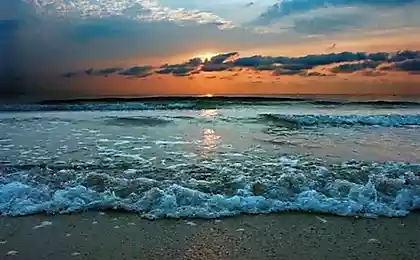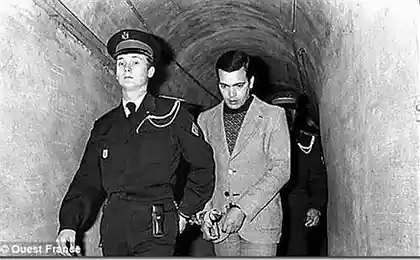1678
Stories of surviving at sea (10 photos)
Stories of survival on the high seas or in the most inhospitable islands captured the imagination of people since then, as the first man to conquer uncharted deep blue waters. In this list, we will tell ten of the most incredible stories of survival:
10. Pedro de Serrano (Pedro de Serrano)
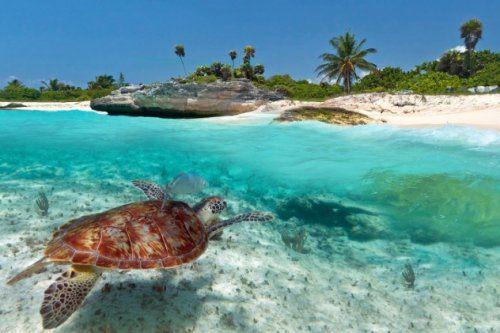
Pedro de Serrano is considered a pioneer of survival rejected. It is not clear how the Spanish ship sank or how he alone was on the island in the Caribbean. He turned out to swim to shore with only a knife in his teeth and with a shirt on his back.
The island was almost a big strip of sand, on which there was almost no vegetation and no shade, respectively. In addition, it was still the New World, in just 50 years before Columbus got lost in it. Ships from appearing on the horizon is very common, and Serrano knew it.
Serrano physical survival depended on turtles. He killed reptiles eat their meat and their shells used to collect water. Given the fact that the other animals on the island was not, Serrano was unable to find his clothes when his clothes had spread on cloth. The only way to escape from the sun was swimming in the ocean.
Three years passed before Serrano noticed a ship that crashed, destroying the hopes of saving Serrano. In the shipwreck survivors, only one sailor, and brought it over to the island Serrano. Serrano, who at that time was more like a beast than a man, was at first terrified by the presence of a sailor, but in the end they were able to cooperate and maintain clarity of mind, observing strict schedule every day.
Of course living together on a strip of sand where a person can eat only meat turtles, and the sun leaves burns on the skin does not have a calming effect on people. At some point of their four-year stay together, Serrano and sailor divided island during a quarrel, and each got half. This situation remained until the ship sailed past like and saved both men after the survivors have vowed that they are not devils.
9. Jerome Cornelis (Jeronimus Cornelisz)
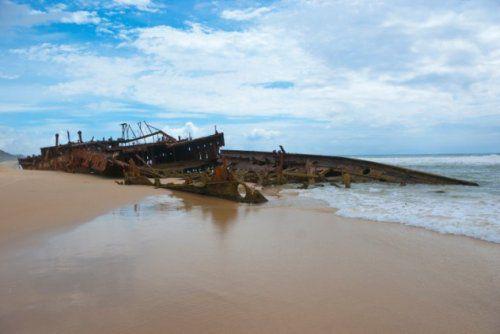
Unlike most of the castaways, insulation was not a problem after Batavia (Batavia) ran aground in 1629. Hundreds of people got to the island, located off the west coast of Australia, but the crash was only the beginning of the ill-fated expedition of trouble for spices.
Cornelis, who was one of the ship's officers, tried to start a rebellion, when the ship of the Dutch East India Trading Company was wrecked. After that, the ship's captain took a boat and 40 men to try to swim to Java, promising to return to rescue 300 survivors. In the absence of Captain Cornelis became a senior officer in rank. He had two problems: he was afraid that the supplies run out and that he would be arrested for the attempted mutiny if rescuers arrive.
Cornelis started his reign of terror by capturing all the supplies collected from Batavia. His loyal sailors guarded around the clock this inventory. To thin out the ranks of survivors Cornelis and his gang used a rescue boat. They sent a group of people in search of water on the other islands, which were considered infertile, and under "Search" Cornelis meant "death" because he did not plan to come back. Cornelis had planned to seize a ship that arrives to save them, so he wanted to get rid of any opposition on the island. He and his men were executed for surviving the most minor offenses, and even just.
During a series of murders one of the expeditions reported that they successfully found water and food on another island. Unfortunately for Cornelis, the leader of this group was a soldier named Vibbi Hays (Wiebbe Hayes), who solved the evil plan of Cornelis. Therefore, 45 men, led by Hayes were able to defeat the heavily armed attackers, using only a slingshot and spears, and concluded Cornelis imprisoned in a pit dug on the beach. Undeterred, the surviving rebels began firing positions Hayes using guns, while on the horizon there was a rescue ship. Before rescue mission marked the end of reign of terror rebels took several months, and by order of Cornelis killed more than 100 people.
8. Robert Drury (Robert Drury)
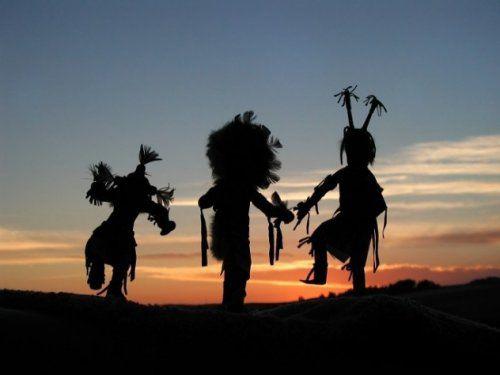
Drury was an English sailor on the ship Degreyv (Degrave) in 1703. After the ship was damaged, the crew, including Drury, was forced to land near Madagascar. However, the landing was only the beginning of problems Drury. Remember the scene from the movie "Pirates of the Caribbean: Dead Man's Chest," which for Jack Sparrow runs an army of natives? It was in the same situation got Drury, only he did not have the ship on which he could escape.
Drury and the rest of the crew spent their first four days in Madagascar trying to escape from about 2000 soldiers Tandroy (Tandroy). When Tandroy finally caught the crew, they executed all but Drury and three other boys, who were then taken into slavery. Drury spent eight years as a royal servant and has worked hard to gain a certain respect, in the end, fighting together with their oppressors Tandroy. Ultimately, the Drury gave certain freedom, and he was allowed to marry the same as captive and make it your own cattle.
After nearly 15 years spent as a slave, Drury alone escaped from Madagascar, on board an English ship slave. Drury wife refused to leave the island for fear of myth, which promised an unnatural death of any servant, who will leave the island. Drury struggled to find its place in English society, and the bizarre twist of fate, he returned to Africa, but this time as a slave.
7. Philip Ashton (Philip Ashton)
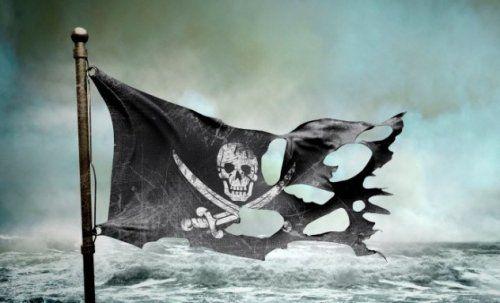
Philip Ashton engaged in the business, working on a fishing vessel off the coast of Nova Scotia (Nova Scotia) in 1723, when he and his sailors with whom he worked, captured by pirates. Pirate captain, Ned Low (Ned Low), gave men the choice to become pirates or die. Philip Ashton was 19 years old. He chose "to become a pirate».
Ashton did not want to take part in the brutality and barbarism that now surrounded him, and he also did not want to be executed for piracy when luck Captain Low finally would end. Eight months after the beginning of his career pirated Philip Ashton had the opportunity to escape. Captain of the ship moored near the shore of the island, located near the Honduras, and sent people, among whom was Ashton ashore to replenish the supply of fresh water. Once the men have finished filling the ship's fresh water jars from the creek, Ashton innocently wandered to the side. When the pirates asked him what he was doing, Ashton shouted "Coconuts!" And carried her into the jungle. A week later, the search for Ashton ended, and he was alone. On the island there was an abundance of fruit and eggs of turtles, which was very helpful, considering that Ashton was barefoot and during the escape he was not able to take home with them.
Everything changed after nine months of isolation, when a Spanish trader in the canoe stopped at the island. He promised to send assistance and Ashton sailed. And yet he left Ashton knife and flint, which allowed Ashton to hunt and cook food over a fire for the first time in a long time since he escaped from the pirates. It took another seven months before Ashton rescued a group of fishermen.
6. Team Peggy (Peggy)
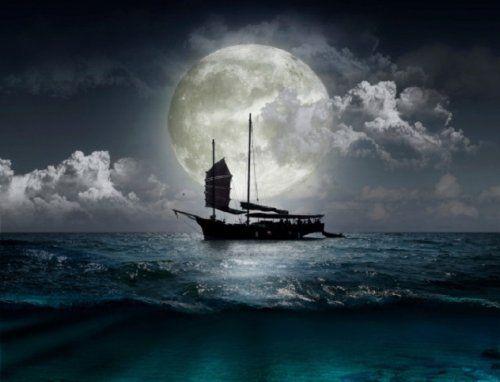
US-masted vessel "Peggy" returned to New York in 1765 after the completion of trade in the Azores (Azores). For most of November Peggy struggled to cross the Atlantic Ocean, while its ruffled one storm after another. Mast, sails and rigging were damaged. The ship drifted down the river, and his body badly leaking. The few stores that remained after the storm were quickly exhausted, and the crew worked desperately hard to keep "Peggy" afloat. It was obvious that the people on the "Peggy" will starve long before they reach the ground, even after he was killed and eaten by a cat vessel. Their only hope was an unlikely chance to meet another ship that could sail close.
Initial talk of cannibalism among the crew was suspended captain David Harrison (David Harrison), but it did not help. By mid-January the crew ate all the skin and candles on board the ship, and when Captain Harrison was confined to his bed, the crew resorted to cannibalism. Regular lottery was just an excuse, as the crew had already decided that the black servant Harrison was supposed to be those who bring themselves to "sacrifice».
In late January, the body servant disappeared, and the captain clinging to life, surviving on a mixture of water and rum, rather than take part in cannibalism.
Second lottery was held, but the victim, David Flatt (David Flatt), has been granted an extension for the night to pray, thanks pleas emaciated Captain Harrison. Miraculously, the next morning the ship bound for London, has brought salvation to all on board "Peggy", including Flatt. Peggy crew was preparing a fire to cook the next victim, when the captain of the vessel "Susan» (Susan) has provided food to the starving sailors, tackle, and accompanied them to London.
5. Robert Jeffery (Robert Jeffery)
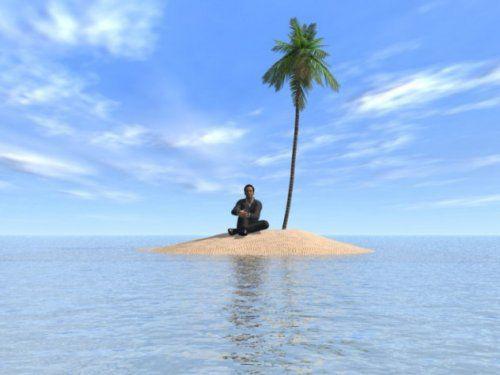
Robert Jeffery was a young sailor in the Royal Navy in 1807. Being on board Recruit (HMS Recruit), he secretly miss the extra beer. The captain, who may himself was a drunkard who responded to the offense, landed 18-year-old guy at the next island, which sailed past the ship. Jeffrey was on a rocky ledge, without food and water, while the crew asked his captain to change his mind. History Jeffrey would have ended shortly thereafter, if the American ship did not save him just nine days later. In fact, the "case" Robert Jeffrey was just the beginning.
The public was outraged by the behavior of the captain, and was soon carried out a military court. In 1810, when the absence of Robert Jeffrey was found living in Massachusetts and worked as a blacksmith, broke another public scandal. Jeffrey's mother was still alive and well in England and British citizens demanded that they reunited. Behind him was sent to the ship of the Royal Navy, and the public in suspense awaited return Jeffrey.
When Robert Jeffrey finally returned to his hometown in England, church bells rang and he was greeted by the waiting crowd. The press and public with a hearty excitement watched as mother and son reunited. The last public outcry erupted to help Robert Jeffrey. Captain who landed Jeffrey three years before, found and made to pay his former sailor sum in damages and for the fact that almost killed him.
4. Charles Barnard (Charles Barnard)
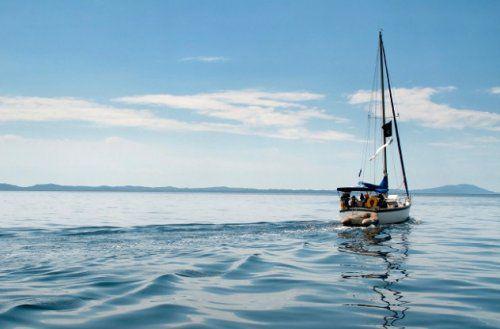
Captain Charles Barnard noticed smoke while on an expedition for sea lions near the Falkland Islands (Falklands) in 1812. When he examined what was happening, he found 45 British sailors stranded on the shore as a result of the shipwreck. Barnard has promised to take them to the closest South American port, unless they promised not to seize the ship, as the war raged in the north in 1812. As proof that no good deed goes unpunished when Barnard stopped on another island and went ashore in a small boat to hunt pigs to feed everyone on board, the British, whom he saved from certain death, sailed on his ship. What Barnard probably never imagined it so that the British left three of his brothers die on the island with him.
Barnard, his one friend American and three British sailors survived for 18 months on various islands in his boat until a British ship had not saved them in 1814. Barnard and his companions, now all "Americans", asked to be put ashore in their boat off the coast of Peru, but here, the Spaniards took them for the British and imprisoned. Barnard took months to clear his name, but he regained his refuge on the British ship and again asked to be dropped off in his small boat, this time, that he finally look for sea lions. Barnard did not find seals, which he hoped to find, but he stumbled on an American ship, which offered him a lift. Barnard accepted the offer and went with the ship to China and Sandvicheskie Islands (Sandwich islands), before he returned to America in 1816.
3. Team Essex (Essex)
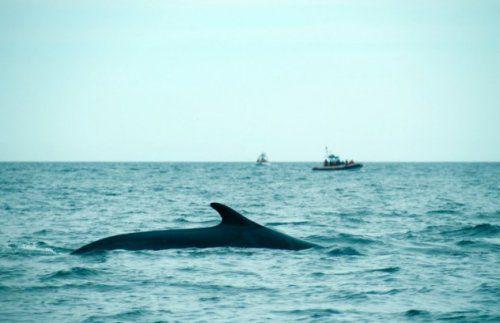
Tales of the whaling ship Essex inspired Herman Melville (Herman Melville) to write Moby Dick (Moby Dick), as Essex was for "19th century in what was for 20 Titanic».
In 1819, Essex sailed from Nantucket (Nantucket). He had to spend two and a half years on an expedition to hunt whales. On the second day of the voyage a violent storm severely damaged the ship and nearly sank it, but the ship was converted and continued to swim forward. A few months later and a thousand miles from the coast, a huge whale rammed the ship. While the crew was trying to assess the damage caused to the whale ship struck again, having done it in the hole so fiercely that the men on board quickly lowered a boat and pick up a few supplies.
These 20 men, laid out on three boats, decided to head south for fear of cannibals from the nearest land, in the Marquesas Islands (Marquesas Islands). It was a momentous decision. A few weeks later, the boat began to leak and supplies run out. The first man, who died instantly eaten. More killed three sailors, and each of them was cooked and eaten. One of the three boats had disappeared, and it never heard of. The other two boats, one led by Captain Pollard (Pollard), and the other led by the senior mate Owen Chase (Owen Chase), divided.
After 89 days spent at sea, three men from the boat were rescued Chase English ship. On board the boat Pollard men cast lots, and younger cousin Pollard appeared next in line to be eaten, although Pollard and asked to take his place. A week later, after Chase was saved American ship found Pollard and another crew member gnawing the bones of their comrades still mad with hunger. Decades later Melville met with the captain, who served as the inspiration for his book, but he just exchanged pleasantries with him out of respect for the terror experienced Pollard.
2. Other survivors from the ship Essex

Shortly after the crew in their boats sailed from drowning Essex, men noticed what is now the island of Henderson (Henderson Island). Men went ashore, thinking about salvation, but found a barren wasteland. Despite the lack of fresh water and food on the island, the three men decided to take a chance and stay. At least so scarce supplies three boats lasted a little longer.
This proved to be a relatively good choice, although the situation was almost always desperate. Rainwater that collects in ozёrtsah on the rocks around the island helps men to quench their thirst, but to find food was very difficult. They did not have the equipment for fishing, and they quickly ate crabs that lived on a small island. Three men had to drink the blood of birds, which they were able to catch, and they found a sad omen of his likely future, when they stumbled upon a few skeletons of people shipwrecked before them.
For 111 days, that men spent on the island, have been exhausted almost all of the resources. If Owen Chase did not convince his rescuers search the Pitcairn Islands (Pitcairn Islands), three crew members left on the island of Henderson almost certainly would have died of thirst, like previous people shipwrecked before them.
1. Bernard Carney (Bernard Carnot)
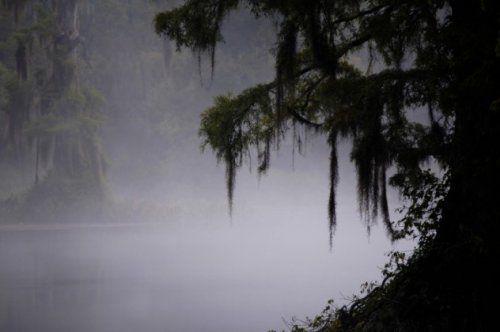
About Bernard Carney did not know much. All that is known for sure is that he was the son of an innkeeper from New Orleans, and due to a series of misunderstandings, he was convicted of a murder he did not commit, and in 1922 sent to Devil's Island, which was part of the French system of penal colonies, located off the coast of French Guiana (French Guiana).
Devil's Island, as its name implies, is a hell on earth. This rocky island jungle teeming with tropical diseases, mosquitoes, and violence between prisoners. The colony was surrounded by sharks, as well as currents, which are usually thrown man on the rocks surrounding the Devil's Island.
After sixteen years, almost all records and trace Carnot disappeared until the American Don Quixote, William Willis (William Willis), have not met the mother of Carnot in New York.
10. Pedro de Serrano (Pedro de Serrano)

Pedro de Serrano is considered a pioneer of survival rejected. It is not clear how the Spanish ship sank or how he alone was on the island in the Caribbean. He turned out to swim to shore with only a knife in his teeth and with a shirt on his back.
The island was almost a big strip of sand, on which there was almost no vegetation and no shade, respectively. In addition, it was still the New World, in just 50 years before Columbus got lost in it. Ships from appearing on the horizon is very common, and Serrano knew it.
Serrano physical survival depended on turtles. He killed reptiles eat their meat and their shells used to collect water. Given the fact that the other animals on the island was not, Serrano was unable to find his clothes when his clothes had spread on cloth. The only way to escape from the sun was swimming in the ocean.
Three years passed before Serrano noticed a ship that crashed, destroying the hopes of saving Serrano. In the shipwreck survivors, only one sailor, and brought it over to the island Serrano. Serrano, who at that time was more like a beast than a man, was at first terrified by the presence of a sailor, but in the end they were able to cooperate and maintain clarity of mind, observing strict schedule every day.
Of course living together on a strip of sand where a person can eat only meat turtles, and the sun leaves burns on the skin does not have a calming effect on people. At some point of their four-year stay together, Serrano and sailor divided island during a quarrel, and each got half. This situation remained until the ship sailed past like and saved both men after the survivors have vowed that they are not devils.
9. Jerome Cornelis (Jeronimus Cornelisz)

Unlike most of the castaways, insulation was not a problem after Batavia (Batavia) ran aground in 1629. Hundreds of people got to the island, located off the west coast of Australia, but the crash was only the beginning of the ill-fated expedition of trouble for spices.
Cornelis, who was one of the ship's officers, tried to start a rebellion, when the ship of the Dutch East India Trading Company was wrecked. After that, the ship's captain took a boat and 40 men to try to swim to Java, promising to return to rescue 300 survivors. In the absence of Captain Cornelis became a senior officer in rank. He had two problems: he was afraid that the supplies run out and that he would be arrested for the attempted mutiny if rescuers arrive.
Cornelis started his reign of terror by capturing all the supplies collected from Batavia. His loyal sailors guarded around the clock this inventory. To thin out the ranks of survivors Cornelis and his gang used a rescue boat. They sent a group of people in search of water on the other islands, which were considered infertile, and under "Search" Cornelis meant "death" because he did not plan to come back. Cornelis had planned to seize a ship that arrives to save them, so he wanted to get rid of any opposition on the island. He and his men were executed for surviving the most minor offenses, and even just.
During a series of murders one of the expeditions reported that they successfully found water and food on another island. Unfortunately for Cornelis, the leader of this group was a soldier named Vibbi Hays (Wiebbe Hayes), who solved the evil plan of Cornelis. Therefore, 45 men, led by Hayes were able to defeat the heavily armed attackers, using only a slingshot and spears, and concluded Cornelis imprisoned in a pit dug on the beach. Undeterred, the surviving rebels began firing positions Hayes using guns, while on the horizon there was a rescue ship. Before rescue mission marked the end of reign of terror rebels took several months, and by order of Cornelis killed more than 100 people.
8. Robert Drury (Robert Drury)

Drury was an English sailor on the ship Degreyv (Degrave) in 1703. After the ship was damaged, the crew, including Drury, was forced to land near Madagascar. However, the landing was only the beginning of problems Drury. Remember the scene from the movie "Pirates of the Caribbean: Dead Man's Chest," which for Jack Sparrow runs an army of natives? It was in the same situation got Drury, only he did not have the ship on which he could escape.
Drury and the rest of the crew spent their first four days in Madagascar trying to escape from about 2000 soldiers Tandroy (Tandroy). When Tandroy finally caught the crew, they executed all but Drury and three other boys, who were then taken into slavery. Drury spent eight years as a royal servant and has worked hard to gain a certain respect, in the end, fighting together with their oppressors Tandroy. Ultimately, the Drury gave certain freedom, and he was allowed to marry the same as captive and make it your own cattle.
After nearly 15 years spent as a slave, Drury alone escaped from Madagascar, on board an English ship slave. Drury wife refused to leave the island for fear of myth, which promised an unnatural death of any servant, who will leave the island. Drury struggled to find its place in English society, and the bizarre twist of fate, he returned to Africa, but this time as a slave.
7. Philip Ashton (Philip Ashton)

Philip Ashton engaged in the business, working on a fishing vessel off the coast of Nova Scotia (Nova Scotia) in 1723, when he and his sailors with whom he worked, captured by pirates. Pirate captain, Ned Low (Ned Low), gave men the choice to become pirates or die. Philip Ashton was 19 years old. He chose "to become a pirate».
Ashton did not want to take part in the brutality and barbarism that now surrounded him, and he also did not want to be executed for piracy when luck Captain Low finally would end. Eight months after the beginning of his career pirated Philip Ashton had the opportunity to escape. Captain of the ship moored near the shore of the island, located near the Honduras, and sent people, among whom was Ashton ashore to replenish the supply of fresh water. Once the men have finished filling the ship's fresh water jars from the creek, Ashton innocently wandered to the side. When the pirates asked him what he was doing, Ashton shouted "Coconuts!" And carried her into the jungle. A week later, the search for Ashton ended, and he was alone. On the island there was an abundance of fruit and eggs of turtles, which was very helpful, considering that Ashton was barefoot and during the escape he was not able to take home with them.
Everything changed after nine months of isolation, when a Spanish trader in the canoe stopped at the island. He promised to send assistance and Ashton sailed. And yet he left Ashton knife and flint, which allowed Ashton to hunt and cook food over a fire for the first time in a long time since he escaped from the pirates. It took another seven months before Ashton rescued a group of fishermen.
6. Team Peggy (Peggy)

US-masted vessel "Peggy" returned to New York in 1765 after the completion of trade in the Azores (Azores). For most of November Peggy struggled to cross the Atlantic Ocean, while its ruffled one storm after another. Mast, sails and rigging were damaged. The ship drifted down the river, and his body badly leaking. The few stores that remained after the storm were quickly exhausted, and the crew worked desperately hard to keep "Peggy" afloat. It was obvious that the people on the "Peggy" will starve long before they reach the ground, even after he was killed and eaten by a cat vessel. Their only hope was an unlikely chance to meet another ship that could sail close.
Initial talk of cannibalism among the crew was suspended captain David Harrison (David Harrison), but it did not help. By mid-January the crew ate all the skin and candles on board the ship, and when Captain Harrison was confined to his bed, the crew resorted to cannibalism. Regular lottery was just an excuse, as the crew had already decided that the black servant Harrison was supposed to be those who bring themselves to "sacrifice».
In late January, the body servant disappeared, and the captain clinging to life, surviving on a mixture of water and rum, rather than take part in cannibalism.
Second lottery was held, but the victim, David Flatt (David Flatt), has been granted an extension for the night to pray, thanks pleas emaciated Captain Harrison. Miraculously, the next morning the ship bound for London, has brought salvation to all on board "Peggy", including Flatt. Peggy crew was preparing a fire to cook the next victim, when the captain of the vessel "Susan» (Susan) has provided food to the starving sailors, tackle, and accompanied them to London.
5. Robert Jeffery (Robert Jeffery)

Robert Jeffery was a young sailor in the Royal Navy in 1807. Being on board Recruit (HMS Recruit), he secretly miss the extra beer. The captain, who may himself was a drunkard who responded to the offense, landed 18-year-old guy at the next island, which sailed past the ship. Jeffrey was on a rocky ledge, without food and water, while the crew asked his captain to change his mind. History Jeffrey would have ended shortly thereafter, if the American ship did not save him just nine days later. In fact, the "case" Robert Jeffrey was just the beginning.
The public was outraged by the behavior of the captain, and was soon carried out a military court. In 1810, when the absence of Robert Jeffrey was found living in Massachusetts and worked as a blacksmith, broke another public scandal. Jeffrey's mother was still alive and well in England and British citizens demanded that they reunited. Behind him was sent to the ship of the Royal Navy, and the public in suspense awaited return Jeffrey.
When Robert Jeffrey finally returned to his hometown in England, church bells rang and he was greeted by the waiting crowd. The press and public with a hearty excitement watched as mother and son reunited. The last public outcry erupted to help Robert Jeffrey. Captain who landed Jeffrey three years before, found and made to pay his former sailor sum in damages and for the fact that almost killed him.
4. Charles Barnard (Charles Barnard)

Captain Charles Barnard noticed smoke while on an expedition for sea lions near the Falkland Islands (Falklands) in 1812. When he examined what was happening, he found 45 British sailors stranded on the shore as a result of the shipwreck. Barnard has promised to take them to the closest South American port, unless they promised not to seize the ship, as the war raged in the north in 1812. As proof that no good deed goes unpunished when Barnard stopped on another island and went ashore in a small boat to hunt pigs to feed everyone on board, the British, whom he saved from certain death, sailed on his ship. What Barnard probably never imagined it so that the British left three of his brothers die on the island with him.
Barnard, his one friend American and three British sailors survived for 18 months on various islands in his boat until a British ship had not saved them in 1814. Barnard and his companions, now all "Americans", asked to be put ashore in their boat off the coast of Peru, but here, the Spaniards took them for the British and imprisoned. Barnard took months to clear his name, but he regained his refuge on the British ship and again asked to be dropped off in his small boat, this time, that he finally look for sea lions. Barnard did not find seals, which he hoped to find, but he stumbled on an American ship, which offered him a lift. Barnard accepted the offer and went with the ship to China and Sandvicheskie Islands (Sandwich islands), before he returned to America in 1816.
3. Team Essex (Essex)

Tales of the whaling ship Essex inspired Herman Melville (Herman Melville) to write Moby Dick (Moby Dick), as Essex was for "19th century in what was for 20 Titanic».
In 1819, Essex sailed from Nantucket (Nantucket). He had to spend two and a half years on an expedition to hunt whales. On the second day of the voyage a violent storm severely damaged the ship and nearly sank it, but the ship was converted and continued to swim forward. A few months later and a thousand miles from the coast, a huge whale rammed the ship. While the crew was trying to assess the damage caused to the whale ship struck again, having done it in the hole so fiercely that the men on board quickly lowered a boat and pick up a few supplies.
These 20 men, laid out on three boats, decided to head south for fear of cannibals from the nearest land, in the Marquesas Islands (Marquesas Islands). It was a momentous decision. A few weeks later, the boat began to leak and supplies run out. The first man, who died instantly eaten. More killed three sailors, and each of them was cooked and eaten. One of the three boats had disappeared, and it never heard of. The other two boats, one led by Captain Pollard (Pollard), and the other led by the senior mate Owen Chase (Owen Chase), divided.
After 89 days spent at sea, three men from the boat were rescued Chase English ship. On board the boat Pollard men cast lots, and younger cousin Pollard appeared next in line to be eaten, although Pollard and asked to take his place. A week later, after Chase was saved American ship found Pollard and another crew member gnawing the bones of their comrades still mad with hunger. Decades later Melville met with the captain, who served as the inspiration for his book, but he just exchanged pleasantries with him out of respect for the terror experienced Pollard.
2. Other survivors from the ship Essex

Shortly after the crew in their boats sailed from drowning Essex, men noticed what is now the island of Henderson (Henderson Island). Men went ashore, thinking about salvation, but found a barren wasteland. Despite the lack of fresh water and food on the island, the three men decided to take a chance and stay. At least so scarce supplies three boats lasted a little longer.
This proved to be a relatively good choice, although the situation was almost always desperate. Rainwater that collects in ozёrtsah on the rocks around the island helps men to quench their thirst, but to find food was very difficult. They did not have the equipment for fishing, and they quickly ate crabs that lived on a small island. Three men had to drink the blood of birds, which they were able to catch, and they found a sad omen of his likely future, when they stumbled upon a few skeletons of people shipwrecked before them.
For 111 days, that men spent on the island, have been exhausted almost all of the resources. If Owen Chase did not convince his rescuers search the Pitcairn Islands (Pitcairn Islands), three crew members left on the island of Henderson almost certainly would have died of thirst, like previous people shipwrecked before them.
1. Bernard Carney (Bernard Carnot)

About Bernard Carney did not know much. All that is known for sure is that he was the son of an innkeeper from New Orleans, and due to a series of misunderstandings, he was convicted of a murder he did not commit, and in 1922 sent to Devil's Island, which was part of the French system of penal colonies, located off the coast of French Guiana (French Guiana).
Devil's Island, as its name implies, is a hell on earth. This rocky island jungle teeming with tropical diseases, mosquitoes, and violence between prisoners. The colony was surrounded by sharks, as well as currents, which are usually thrown man on the rocks surrounding the Devil's Island.
After sixteen years, almost all records and trace Carnot disappeared until the American Don Quixote, William Willis (William Willis), have not met the mother of Carnot in New York.







